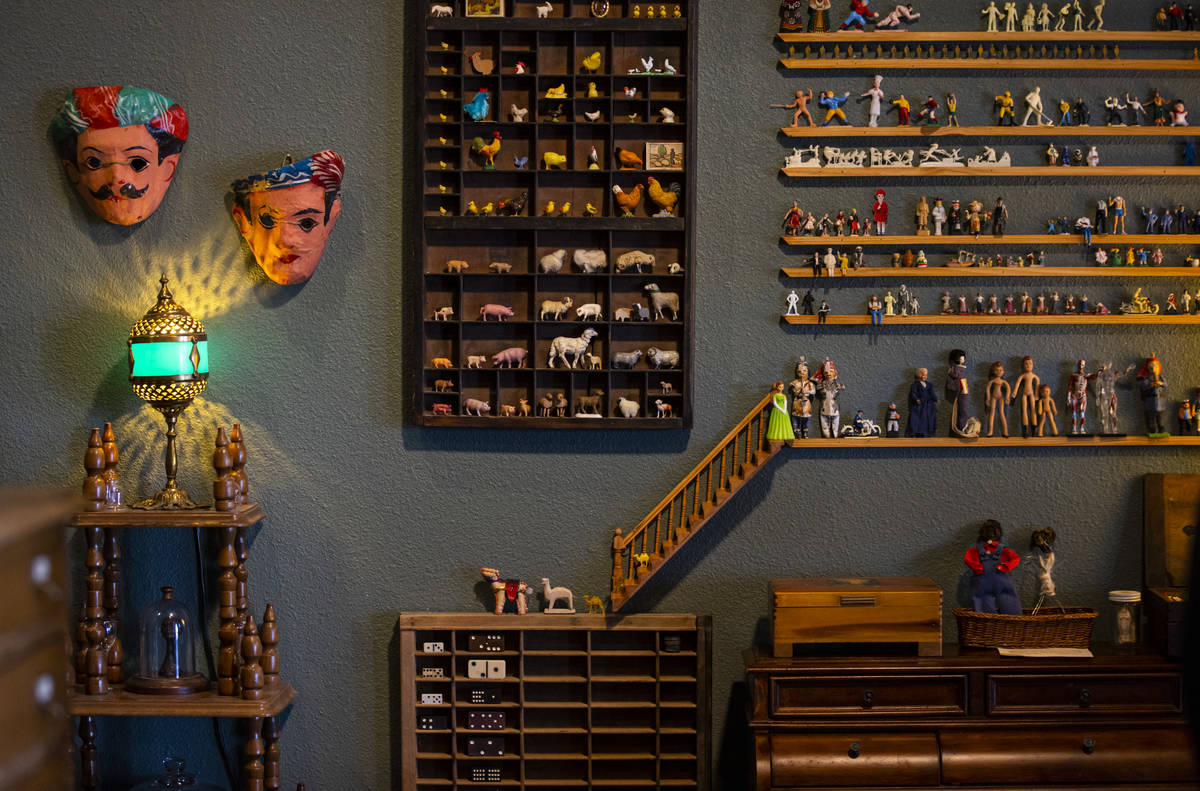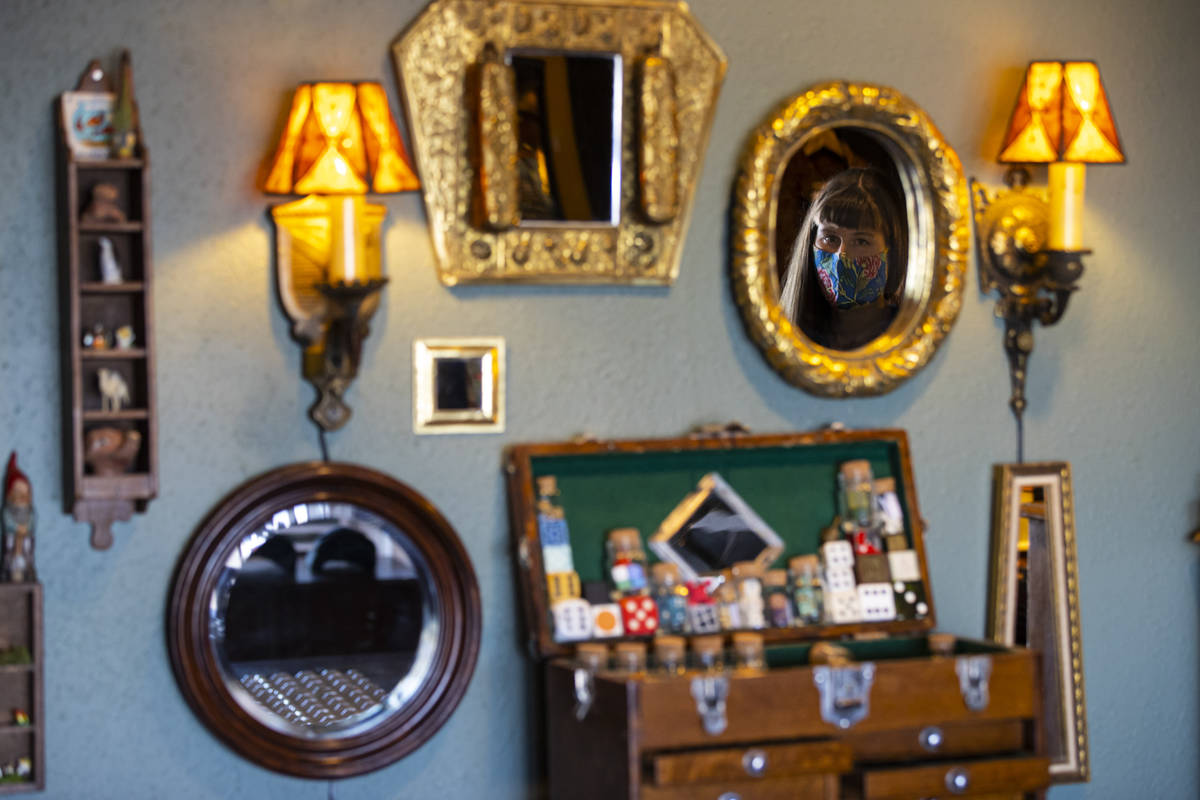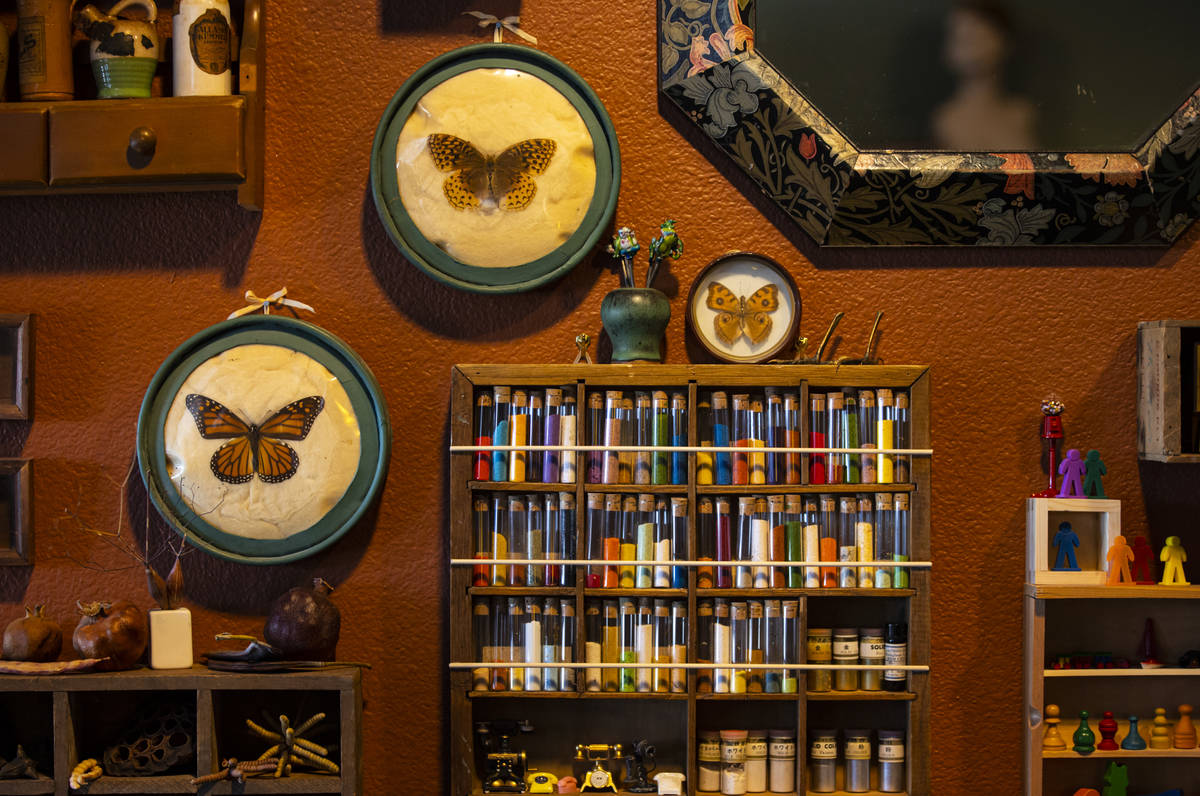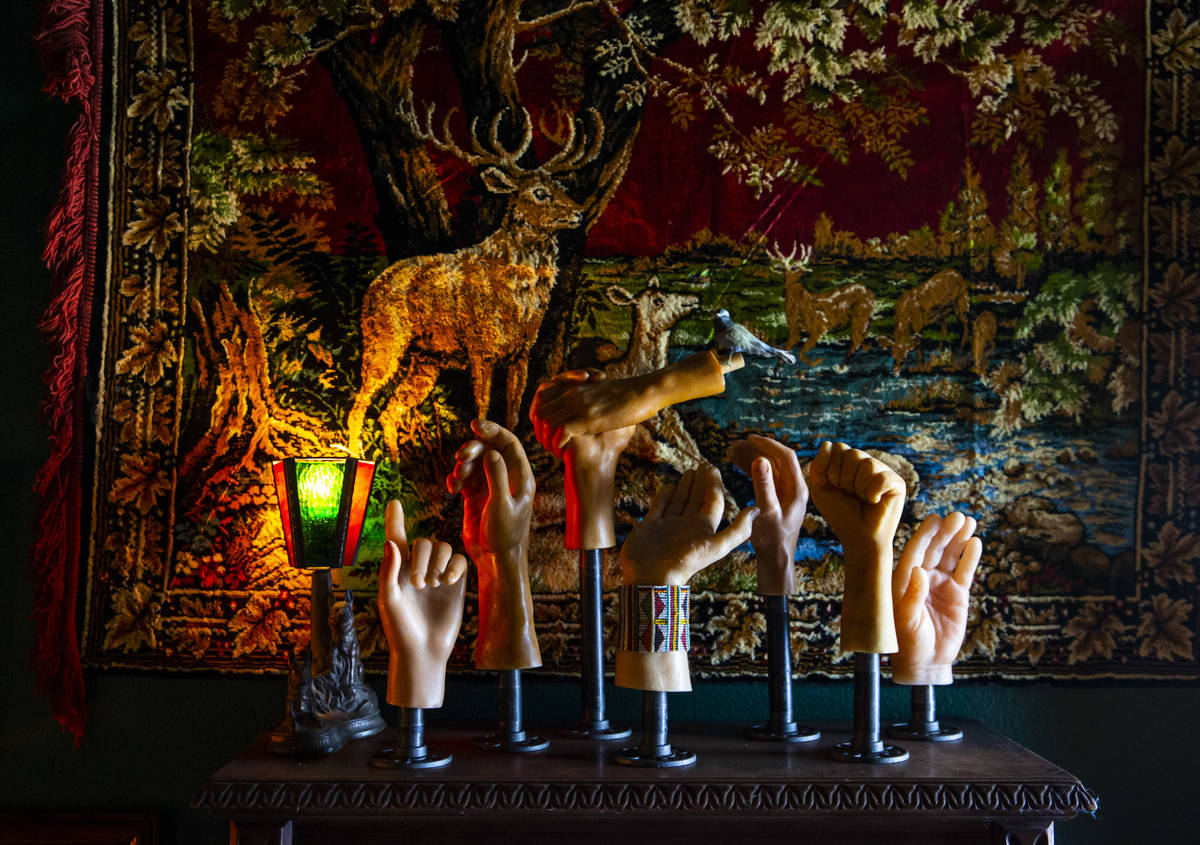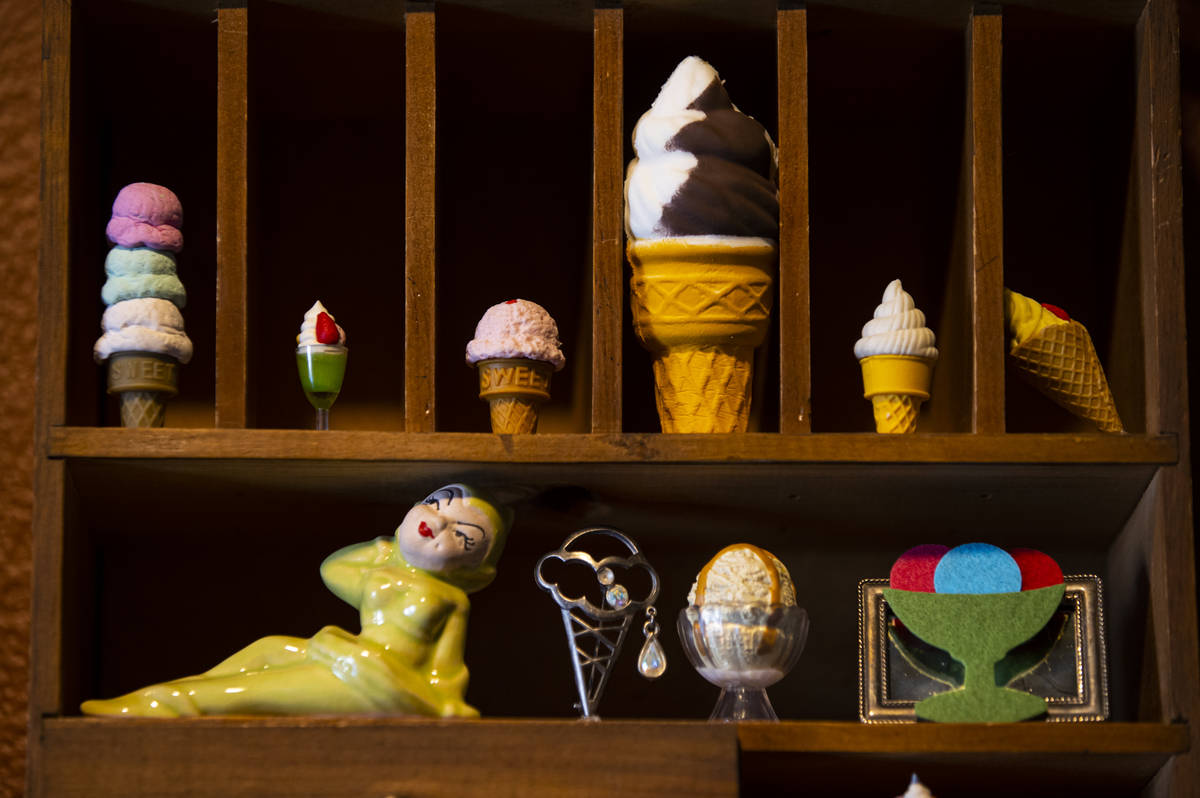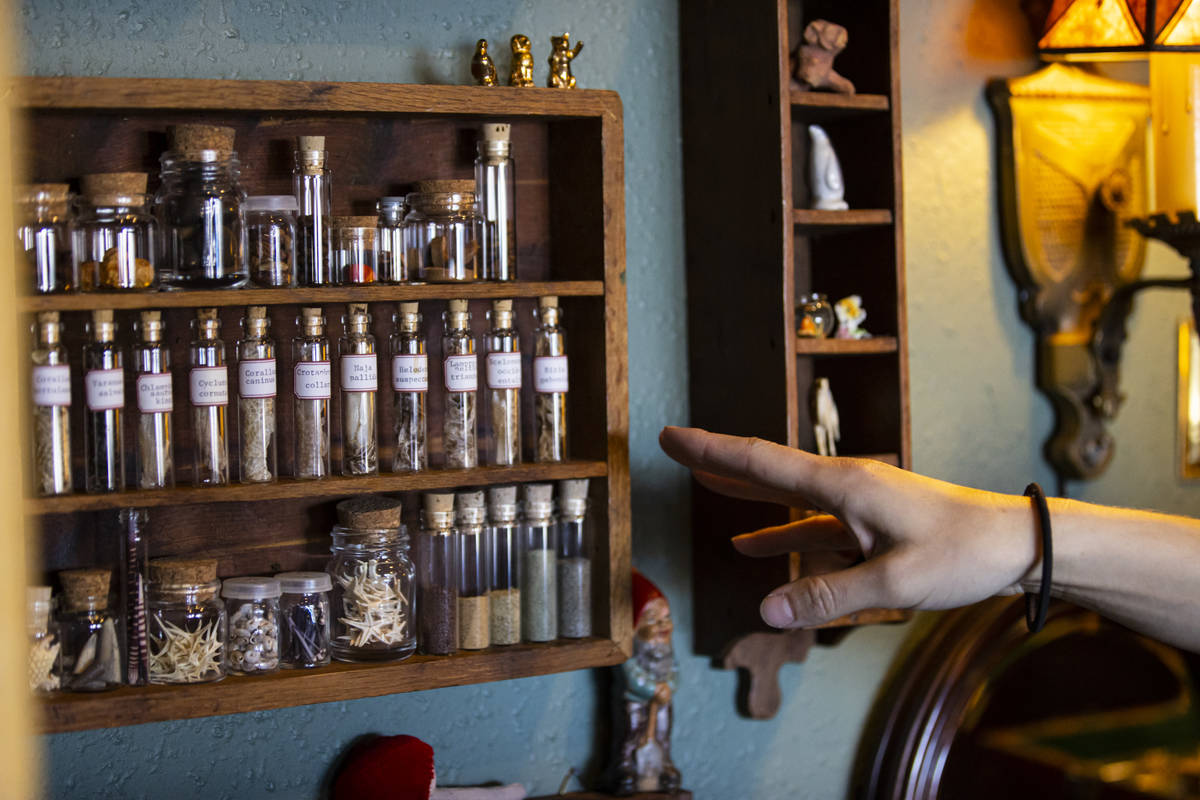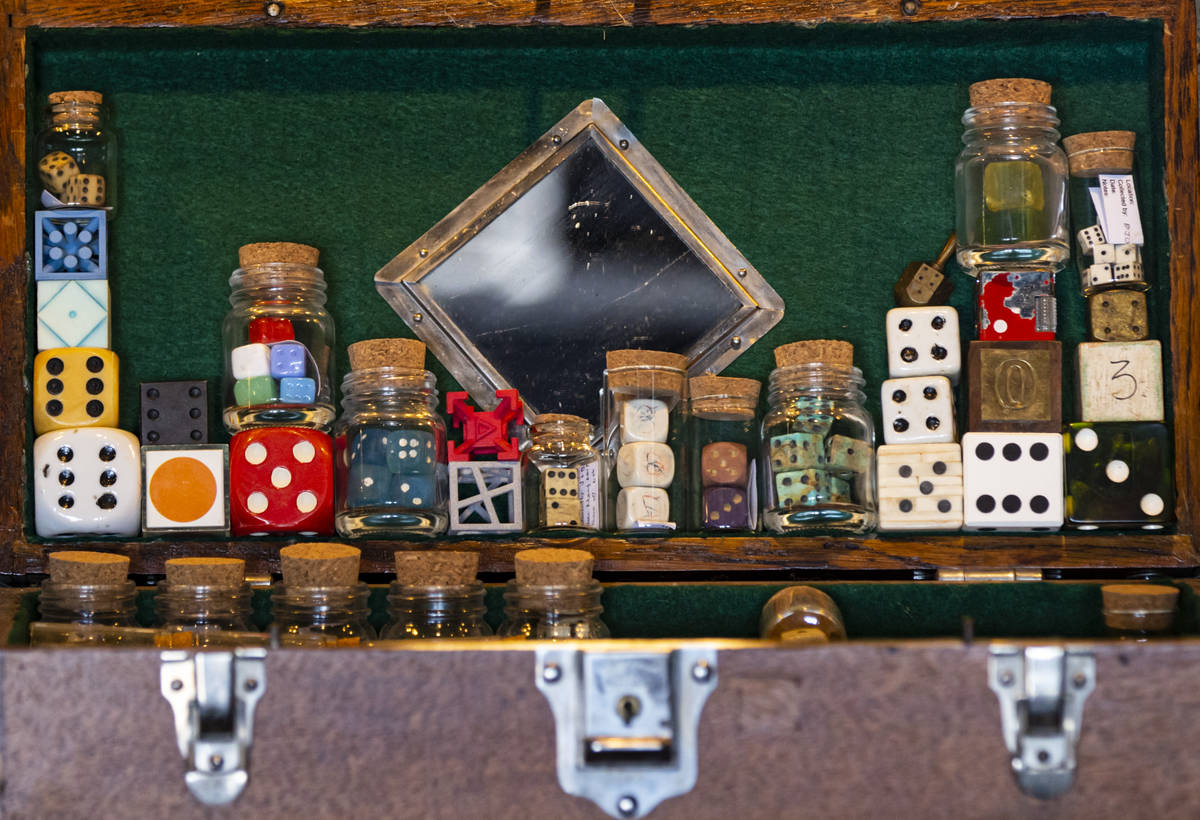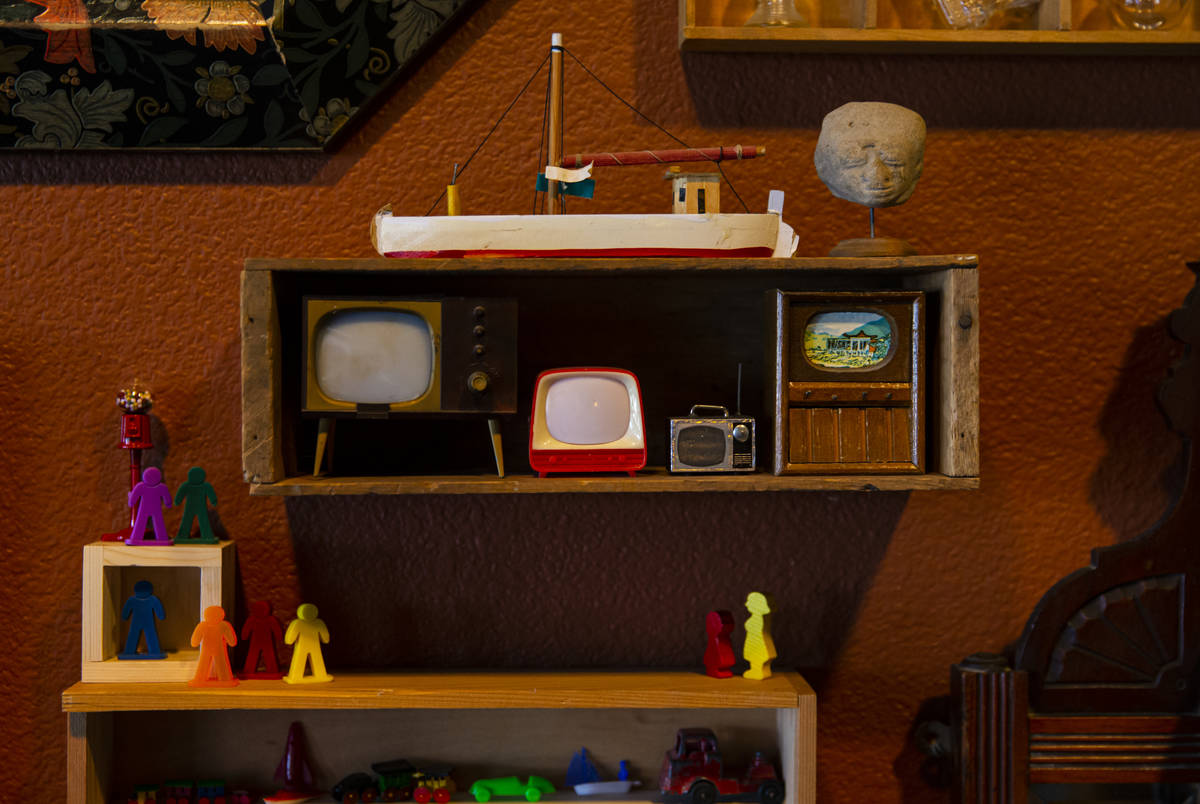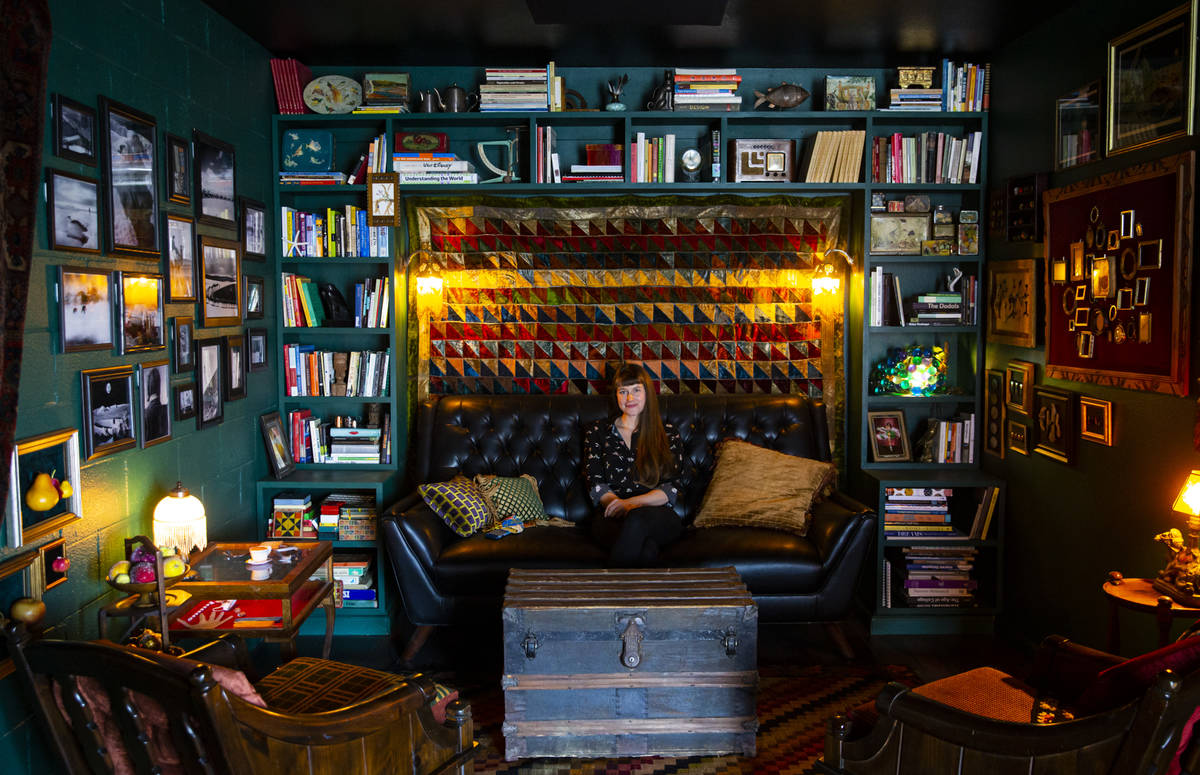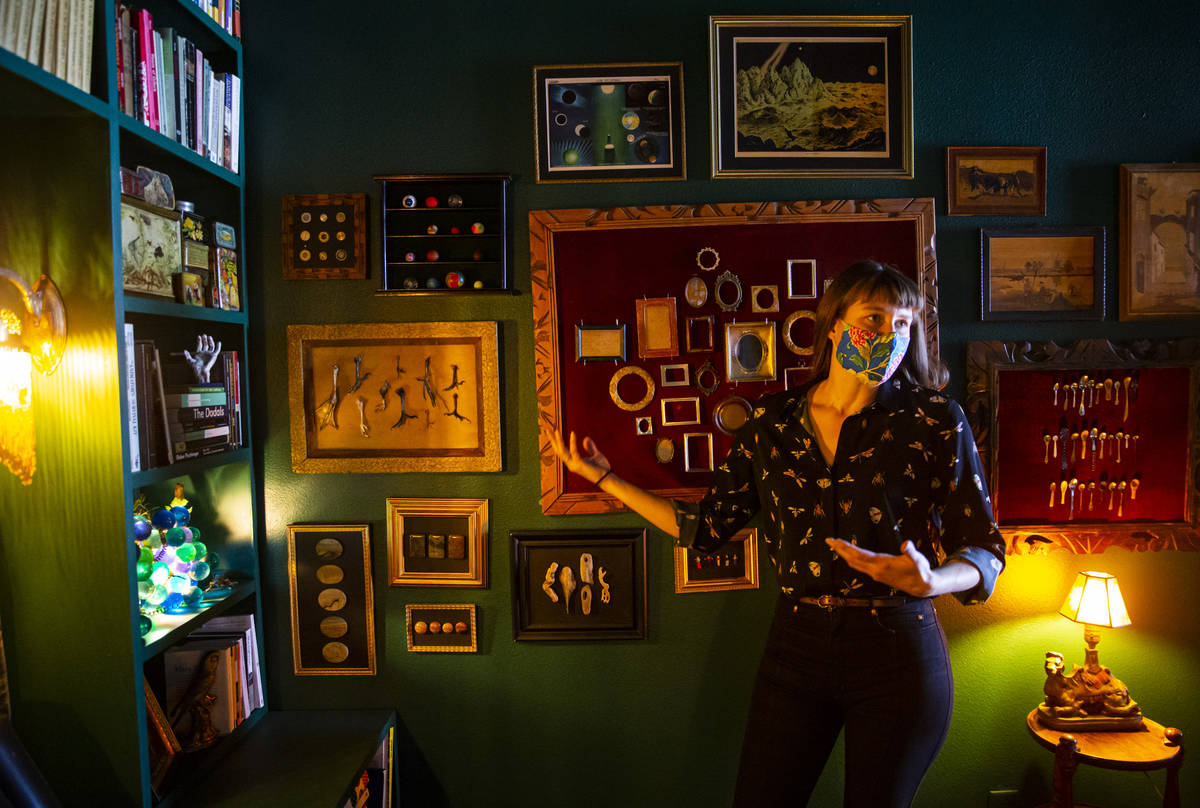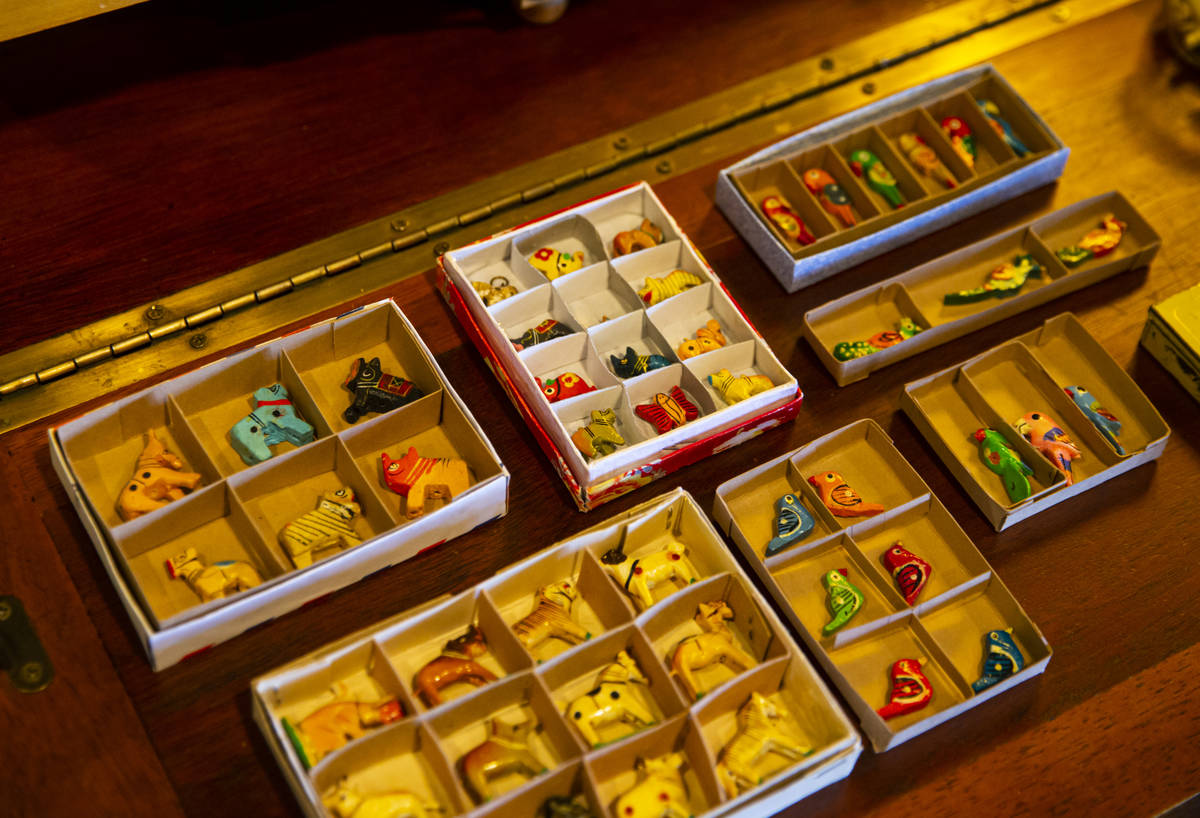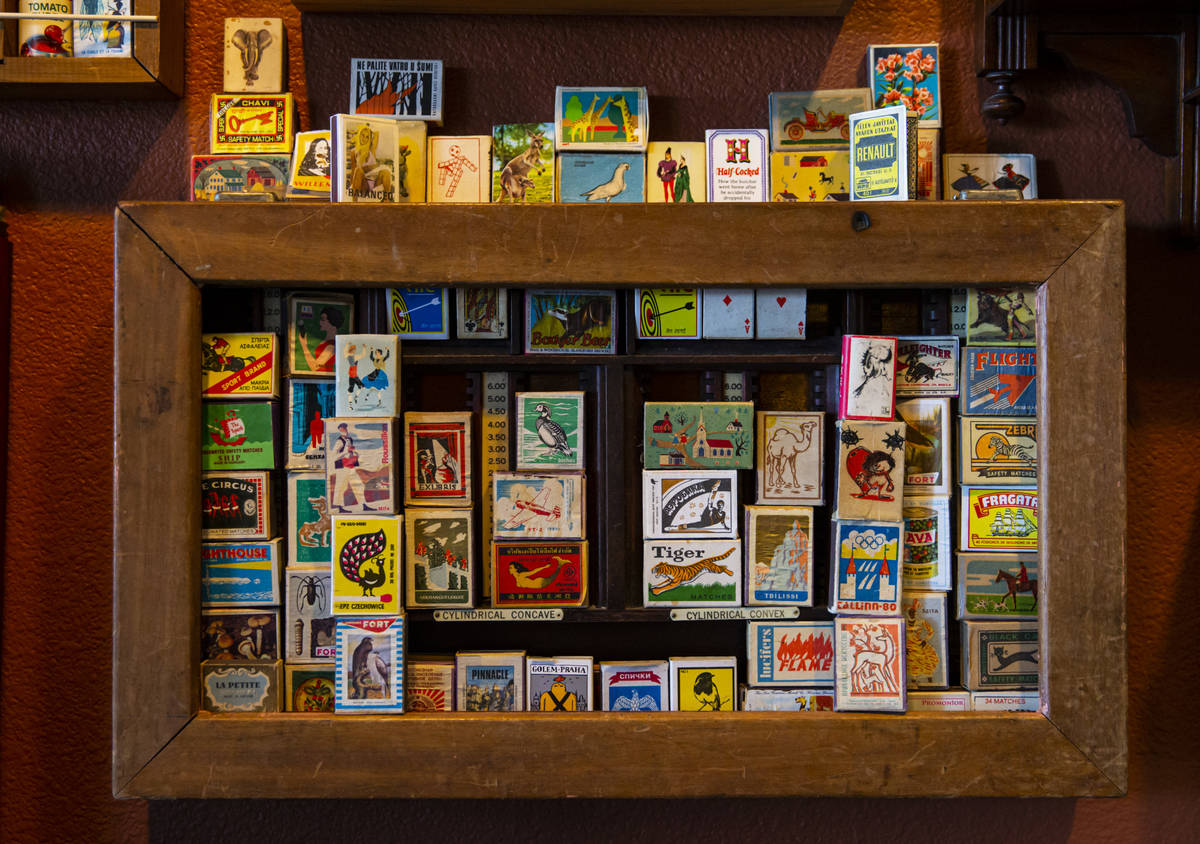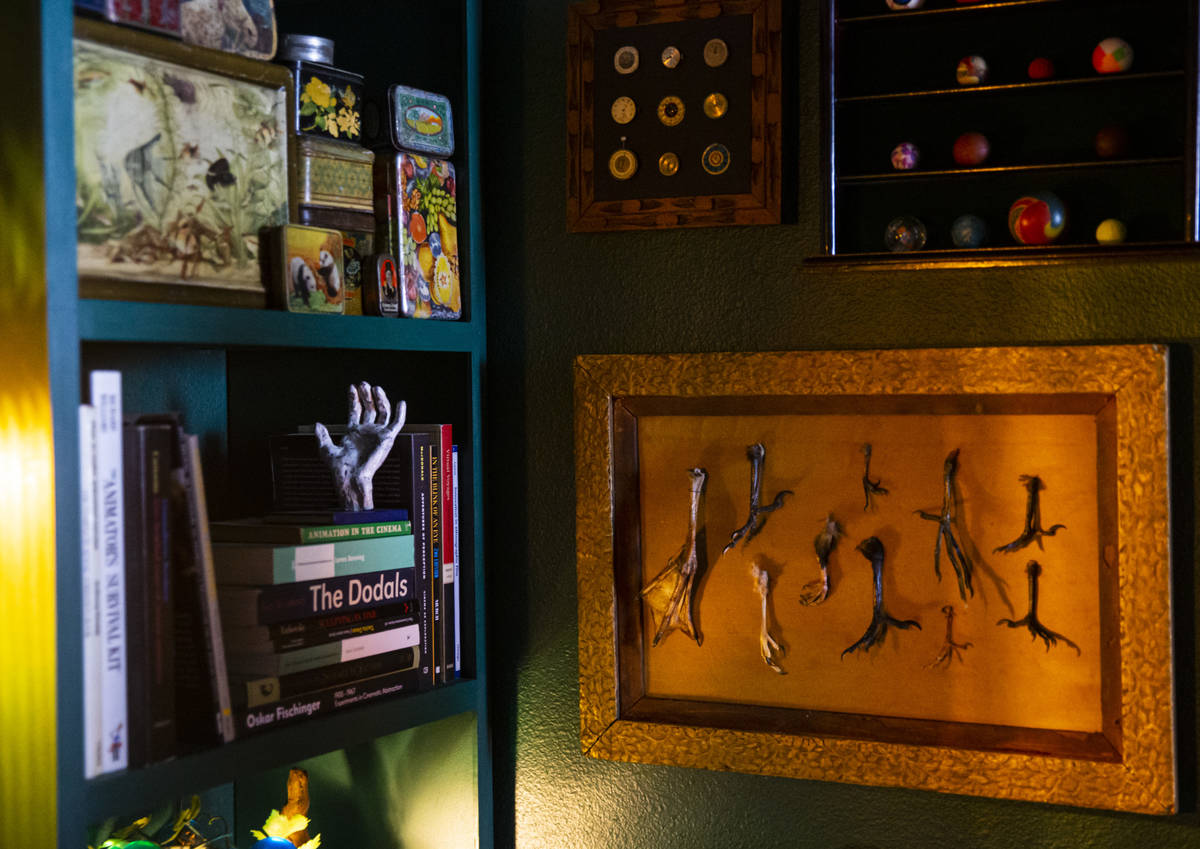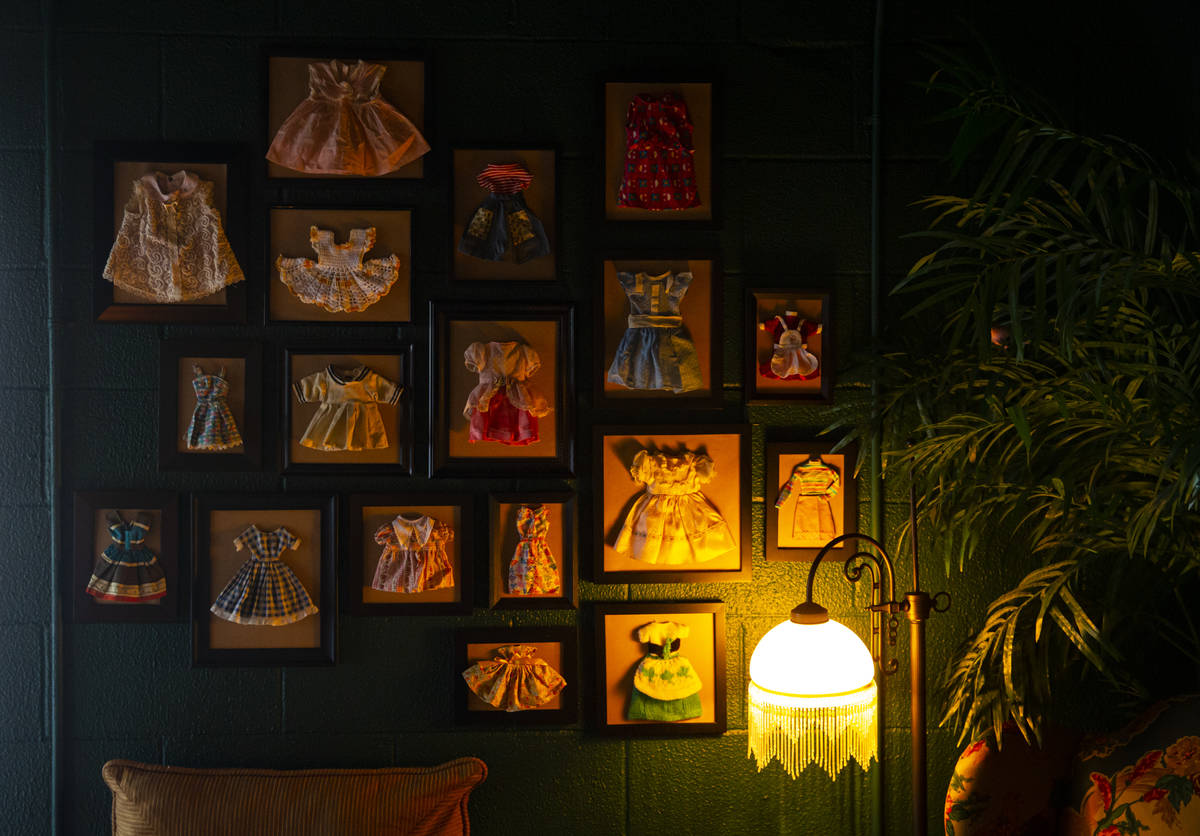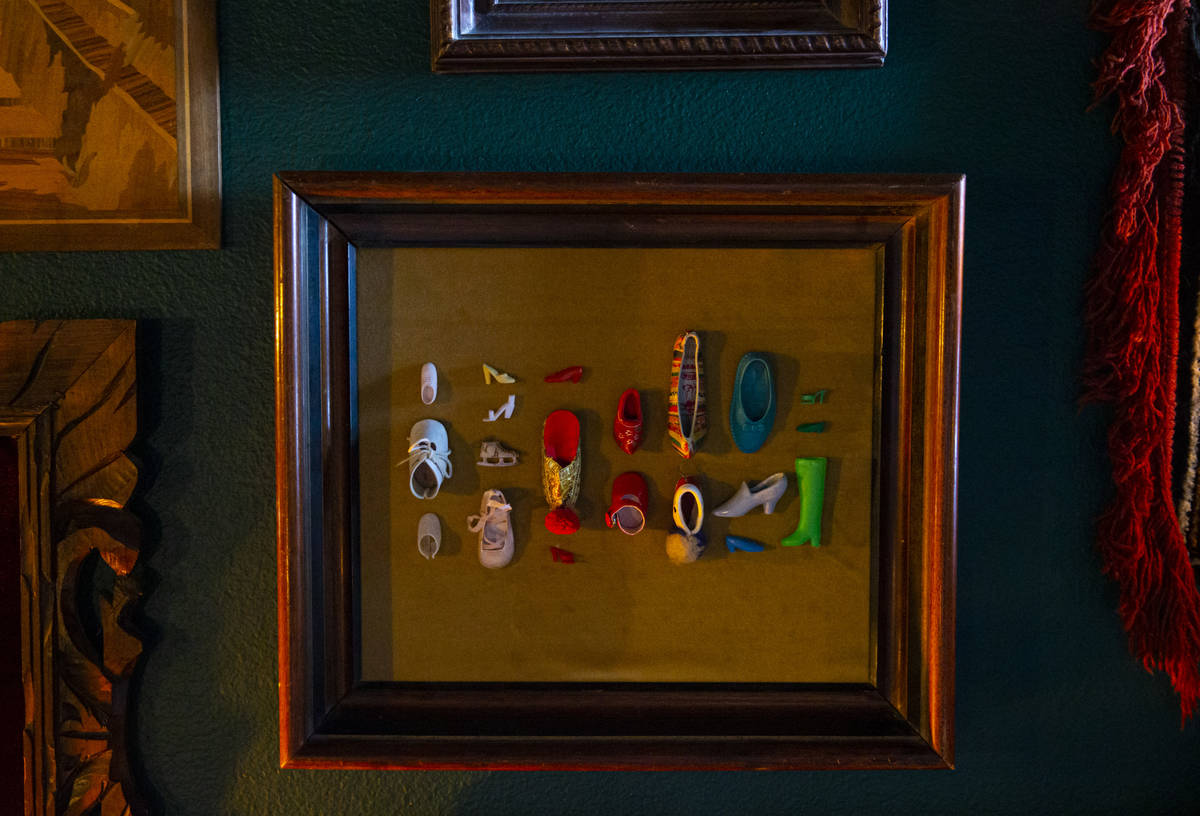Countless curiosities in new museum and gallery at New Orleans Square
It all traces back to a gaggle of dead cockroaches if you think about it.
Jessica Oreck has been collecting stuff her whole life, pretty much.
This includes flat-lined insects.
Let her explain.
“I grew up in New Orleans, and I loved bugs,” she begins. “When I would find a dead cockroach, I was like, ‘I need this for my collection.’
“I would steal my sister’s jewelry boxes and fill them with dead roaches,” she continues. “I’m sure my parents were super-pleased.”
Those deceased critters aren’t present in the menagerie of miniature things that is her Office of Collecting & Design, but much of everything else that Oreck has gathered over the years is.
An ornately arranged pastiche of curios, the collections on display here include clutches of ceramic livestock, palm-sized wooden drawers, brightly colored vials of Japanese pigments and even a framed assortment of dead bird feet (more on that one later).
This place is new and yet feels lived-in at once.
There’s a palpable sense of history here, an intangible, yet ever-present sensation of the strangely familiar, conjured by thousands of things with thousands of stories.
“It’s a library and archive of lost and forgotten objects,” Oreck explains. “It’s the things that you can’t use any more, but that are too lovely to just throw away.
“All sorts of collections that don’t have any everyday use,” she continues, “but when taken as a whole, really speak to something about the way that we consume, the way that we create and the way that we look at objects in our world and the way that they sort of become invisible over time.”
Now open in New Orleans Square (900 Karen Ave., Suite B-105), The Office of Collecting & Design is part museum, art gallery and studio space for Oreck, who’s also a filmmaker with a background in biology, ecology, environmental history and botany.
She’s made four features and dozens of shorts, spending most of her adult life traveling the world, making films in places such as Russia, Finland and Japan.
Her collections reflect as much, culled from around the globe.
“One of the other things that I love, maybe more than any other part of traveling, is getting into somebody’s grandma’s attic,” she says. “You make friends with someone and they’re like, ‘Oh, you collect weird collage material? Let me bring you into my grandmother’s attic.’ You unpack these boxes and to me, that’s like the epitome of wonderful times.”
Oreck and her partner moved to Vegas last spring for work. She then began work of her own on the Office about six months ago.
Open on Wednesdays and by appointment, the Office is free to visit. While the items in the museum aren’t for sale — there is a small gift shop up front — Oreck will part with them for the right price.
“If somebody came in and said, ‘I really have to have that collection of tiny doll heads,’ I’d say, ‘OK,’ ” she says. “Certainly, that’s not the point.”
As she led a tour of The Office of Collecting & Design on a recent Thursday morning, Oreck shared the stories behind some of her favorite collections (hint: they’re pretty much all her favorite collections).
Damaged dice
One of Oreck’s oldest and most cherished collections is her vast array of dice, which is the only thing that she won’t sell here.
“I specifically collect dice that are not playable. The pips are uneven or the corners are broken or they’re not square on all sides. I like the ones that have lots of imperfections the best. They have history in them. Some people would say they’re worthless and useless, but that’s what appeals to me the most.”
Stray buttons
Oreck has a thing for lost things, such as this colorful assortment of buttons.
“These are all buttons that I’ve picked up on the street. Somebody out there I’m sure would look at that and be like, ‘Oh, that’s trash, nobody knows what coat it came from or what shirt it came from.’ But to me, these buttons are all an adventure. They’ve loosed themselves from their previous lives and they are out and about in the world. Now, they’re part of a new collection.”
Lizard skins
For 10 years Oreck worked as a live animal keeper at the American Museum of Natural History in New York, tending to some reptiles for a time, which is where this collection came from.
“For a couple of years we had a lizard and snakes exhibit. Being a live animal keeper, obviously you’re taking care of the animals, and I kept the sheds from each of the lizards and snakes under my care. The Gila monster was my favorite. He was a sweetie.”
Indian ribbons
This assortment of gorgeous ribbons is one of Oreck’s only collections that she bought new.
“When I was in India, I became friends with these guys and I spent so much time at this trimming shop in Kolkata. They ended up making me tea, inviting for me for a meal, because every day I would go there and just pore through the ribbons, just to look at everything. I don’t buy stuff new, because I don’t like to spend a lot of money on the collections, but I couldn’t resist some of their ribbons. They were just so beautiful.”
Miniature wooden animals
These small, hand-painted animals are from India as well.
“I had a couple of them already and I wanted more. I asked everywhere, nobody could tell me. Finally, I found a guy. But he didn’t speak any English. He couldn’t tell me where it was. So he closed up his shop, he took me down the street, we went through a restaurant, out the back of the restaurant, up some stairs, through this totally unmarked door and inside was this insane trimming shop that was packed so full of stuff and so full of people, you could hardly move. It was so wild. But I never would have found that without that guy’s help. I’m indebted to people like that.”
Dead bird feet
Oreck once served as a falconer’s apprentice in Germany, where she assembled this highly unique collection.
“We would hunt with a hawk along the flight line at the military base there to keep the crows and stuff from nesting along on the flight line, to keep the bird strikes down on the planes. I started collecting the feet of all the birds that the hawk killed. I liked that they used a natural predator to keep the population down.”
Contact Jason Bracelin at jbracelin@reviewjournal.com or 702-383-0476. Follow @JasonBracelin on Twitter and @jbracelin76 on Instagram



